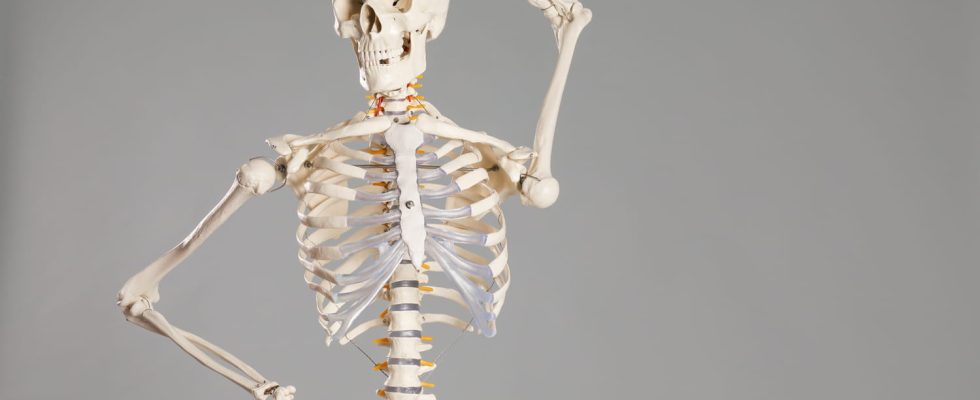Are your first science lessons at school a long way away? Did you know that we lose almost a hundred bones in total as we become adults?
The human body is a fascinating structure that changes according to people and their ages. Our skeletons, in particular, differ in size, weight, and shape, to accommodate our unique bodies. The bones of an adult represent, for example, approximately 20% of their body weight, but this percentage varies depending on each person’s morphology.
The bones themselves fall into four categories: long, short, flat and irregular, each with a specific structure and function. They don’t just allow us to stand and move; they protect our organs and store essential minerals such as calcium and phosphorus, while also housing bone marrow, which produces our blood cells. Each bone, from the largest to the smallest, plays a crucial role in our daily life.
But did you know that we are born with more than 350 bones and that this number drops drastically to 206 as adults? This metamorphosis is a natural process where the baby’s bones, mainly made up of cartilage, begin to ossify and for some to fuse. This transformation is essential because it allows our skeletons to strengthen and support our bodies over time.
- At the age of 3, bones develop from the different bony pieces that began to form at birth. In particular, the bones of the skull, which are separated in babies to allow brain growth and to facilitate childbirth, began to fuse together to form the skull – a process called synostosis. The process is not complete, just like the fusion of the vertebrae. But the exact number of bones can already go down to between 300 and 270 bones.
- At 5, the epiphyses of long bones (ends of bones that are separated by growth plates in children) were able to fuse with the diaphysis (the main body of the bone). A child can have between approximately 270 and 240 bones. That said, the exact number can vary depending on the stage of growth and the timing of bone fusion.
- In 10 years, bone number is most variable, with the exact fusion process potentially influenced by genetic, nutritional, and environmental factors. Some bones in the hand and foot begin to fuse together and the long bones continue to strengthen. It can be estimated that a 10 year old child would have a bone count somewhere between 206 and 240 bones.
- At 15, the key age of adolescence, most children have a bone count that approaches that of an adult. However, the process is not quite complete yet, especially for the growth plates of long bones. In a 15-year-old, these plaques are still active, although they may begin to show signs of closing, especially in girls, who generally reach skeletal maturity earlier than boys. A 15-year-old might have a bone count slightly higher than 206, which is the standard number for adults.
On average, bone counts stop falling in girls between the ages of 14 and 18 and in boys between 16 and 19, although this can vary greatly between individuals. And human variability doesn’t stop there: some adults have more bones than average, as in the case of polydactyly where a person is born with more fingers or toes than normal.
